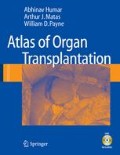Hemodialysis is one of the main modalities for renal replacement therapy in patients with end-stage renal disease. Successful hemodialysis is contingent upon the creation of proper vascular access. Chronic vascular access was first established in 1960 by Scribner and colleagues when they created a shunt between the radial artery and the cephalic vein using an external Silastic device. However, this device was fraught with problems such as bleeding, clotting, and infection. In 1966, Breschia and Cimino described a surgical fistula between the radial artery and the cephalic vein just proximal to the wrist, thereby eliminating the external shunt and enabling a high flow system for hemodialysis. To this day, it remains the procedure of choice for patients with end-stage renal disease in need of chronic hemodialysis.
Several principles should be followed when planning vascular access surgery. In general,primary fistulas are better than prosthetic grafts due to better long-term patency and lower risk of infection and thrombosis. The upper extremity is preferable to the lower extremity and the nondominant arm should be employed first. If possible, a distal site should be selected first, preserving the upper arm for subsequent use. Careful pre-operative vascular assessment is performed with palpation of the radial, ulnar, and brachial pulses; an Allen's test is performed on both sides. The superficial veins of the arm should be carefully assessed with application of a proximal tourniquet. In some cases, the cephalic vein is readily evident at the wrist, antecubital fossa area, or in the lateral aspect of the upper arm. Once a decision has been made to perform access surgery, no venipunctures or blood pressure monitoring should be performed in that arm. If no superficial veins are apparent, the venous system may be assessed by ultrasound examination of the arm. Both the cephalic and basilic systems are interrogated, as well as the deep venous system and the central veins. Patients with suspected central venous stenosis or prior catheters inserted on the ipsilateral side, or with abnormal findings on ultrasound, may be assessed by conventional venography. If central stenoses are found, they should be corrected by endovascular techniques preoperatively, or an alternate site for access should be sought.
Access this chapter
Tax calculation will be finalised at checkout
Purchases are for personal use only
Selected Readings
Akoh JA, Sinha S, et al. A 5-year audit of hemodialysis access. Int J Clin Pract 2005;59(7):847–851.
Brescia MJ, et al. Chronic hemodialysis using venipuncture and a surgically created arteriovenous fistula. N Engl J Med 1966;275:1089.
Crabtree JH, Fishman A. A laparoscopic method for optimal peritoneal dialysis access. Am Surg 2005;71(2):135–143.
Diaz-Buxo JA. Access and continuous flow peritoneal dialysis. Perit Dial Int 2005;25(suppl 3):S102–104.
Gray RJ, Sands JJ, eds. Dialysis Access: A Multidisciplinary Approach. Philadelphia: Lippincott Williams & Wilkins, 2002.
Kawecka A, Debska-Slizien A, Prajs J, et al. Remarks on surgical strategy in creating vascular access for hemodialysis: 18 years of one center's experience. Ann Vasc Surg 2005;19(4):590–598.
Keuter XH, van der Sande FM, Kessels AG, de Haan MW, Hoeks AP, Tordoir JH. Excellent performance of one-stage brachial-basilic arteriovenous fistula. Nephrol Dial Transplant 2005;20(10):2168–2171.
Lin PH, Bush RL, Nguyen L, Guerrero MA, Chen C, Lumsden AB. Anastomotic strategies to improve hemodialysis access patency — a review. Vasc Endovasc Surg 2005;39(2):135–142.
National Kidney Foundation. Kidney Disease Outcomes Quality Initiative (NKF K/DOQI). Clinical practice guidelines for vascular access. Am J Kidney Dis 2001;37(suppl 1):s137–s181.
Ramage IJ, Bailie A, Tyerman KS, McColl JH, Pollard SG, Fitzpatrick MM.Vascular access survival in children and young adults receiving long-term hemodialysis. Am J Kidney Dis 2005;45(4):708–714.
Striker GE, Tenckhoff H. A transcutaneous prosthesis for prolonged access to the peritoneal cavity. Surgery 1971;69:70.
Wilson SE, ed. Vascular Access: Principles and Practice. St Louis: Mosby, 1996.
Author information
Authors and Affiliations
Rights and permissions
Copyright information
© 2009 Springer-Verlag London Limited
About this chapter
Cite this chapter
Khwaja, K.O. (2009). Dialysis Access Procedures. In: Atlas of Organ Transplantation. Springer, London. https://doi.org/10.1007/978-1-84628-316-1_2
Download citation
DOI: https://doi.org/10.1007/978-1-84628-316-1_2
Published:
Publisher Name: Springer, London
Print ISBN: 978-1-84800-914-1
Online ISBN: 978-1-84628-316-1
eBook Packages: MedicineMedicine (R0)

